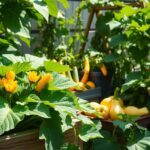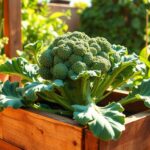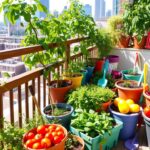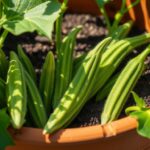Have you ever wondered if there’s a way to keep your plants thriving without the daily hassle of watering? Self-watering systems might just be the answer you’ve been searching for. These innovative setups are designed to save you time and effort while ensuring your garden stays lush and healthy.
Unlike traditional methods, these systems use a reservoir to store water, which is then drawn up into the soil as needed. This not only conserves water but also delivers it directly to the roots, promoting healthier growth. Whether you’re using a simple five-gallon bucket or a more advanced setup, the results are transformative.
In this article, we’ll explore how these systems work, their benefits, and how you can implement them in your own space. Get ready to discover a smarter way to care for your plants!
Key Takeaways
- Self-watering systems reduce the need for daily watering.
- They conserve water by minimizing evaporation.
- These systems promote healthier root growth.
- Simple items like buckets can be transformed into efficient planters.
- They are ideal for busy individuals or those with limited time.
Essentials of self watering container gardening
Looking for a low-maintenance way to ensure your plants thrive? These innovative setups are designed to simplify plant care while conserving resources. Let’s dive into the essentials of how they work and why they’re a game-changer for any garden.
How Self-Watering Containers Work
At the heart of this system is a water reservoir located at the bottom of the planter. This reservoir stores water, which is then drawn up into the soil through a wick. The wick, often made of a porous material like cotton or felt, ensures consistent moisture for the plant’s roots.
An overflow hole is crucial to prevent overwatering. This hole allows excess water to escape, maintaining the perfect balance. The setup also includes a perforated lid that supports the soil while allowing the wick to function effectively.
Benefits of a Water Reservoir and Wick System
One of the biggest advantages is water conservation. By minimizing evaporation, the system ensures that every drop counts. It also promotes healthier root growth by delivering water directly to where it’s needed most.
Another benefit is the reduced need for daily watering. This makes it ideal for busy individuals or those who travel frequently. The consistent moisture levels also help plants thrive, even in hot weather.
DIY vs. Commercial Self-Watering Systems
If you’re handy, you can create your own system using materials like a 5-gallon bucket or plastic storage tote. Drill holes of the right diameter for the wick and overflow, and you’re good to go. This DIY approach is cost-effective and customizable.
For those who prefer a ready-made solution, commercial systems like the FarmDaddy® kit offer convenience and reliability. These kits come with all the necessary components, ensuring a hassle-free setup.
Whether you choose DIY or commercial, the key is to understand the mechanics. Properly setting up the reservoir, wick, and overflow hole will ensure your plants stay healthy and hydrated.
Choosing the Right Plants, Substrates, and Materials
Curious about the best plants and soil for efficient growth? Selecting the right combination is key to success. Whether you’re growing tomatoes, peppers, or herbs, understanding what works best can make all the difference.
What Plants Grow Well in Self-Watering Pots?
Certain plants thrive in these setups. Tomatoes, peppers, and cucumbers are excellent choices. They benefit from consistent moisture and grow well in these systems. Herbs like basil and parsley also perform exceptionally.
On the other hand, some plants don’t fare as well. Succulents and cacti prefer drier conditions and may not adapt. Always consider the plant’s natural habitat before choosing.
Best Potting Mixes and Fertilizers for Optimal Growth
The right soil is crucial. A peat-free potting mix enriched with compost works wonders. It retains moisture while providing essential nutrients. Avoid garden soil, as it can compact and hinder growth.
Fertilizers play a big role too. For tomatoes, a balanced, slow-release fertilizer is ideal. Peppers benefit from added calcium to prevent blossom end rot. Always follow the recommended application rates.
When filling your pot, ensure the mix is slightly damp. This helps the plant establish roots quickly. Check the water level daily, especially during hot weather, to keep your plants hydrated.
Managing Challenges and Troubleshooting Techniques
Ever faced issues with your planters despite their innovative design? Even the most efficient systems can encounter problems. Let’s explore common challenges and how to address them effectively.
Preventing Overwatering and Root Rot
Overwatering is a frequent issue, especially in systems with a water reservoir. Signs include yellowing leaves and a foul smell from the soil. To prevent this, ensure your drainage hole is clear and functioning properly.
Root rot occurs when the plant root sits in stagnant water. Regularly check the water level and avoid overfilling. If you notice mushy roots, trim the affected areas and let the soil dry slightly before refilling.
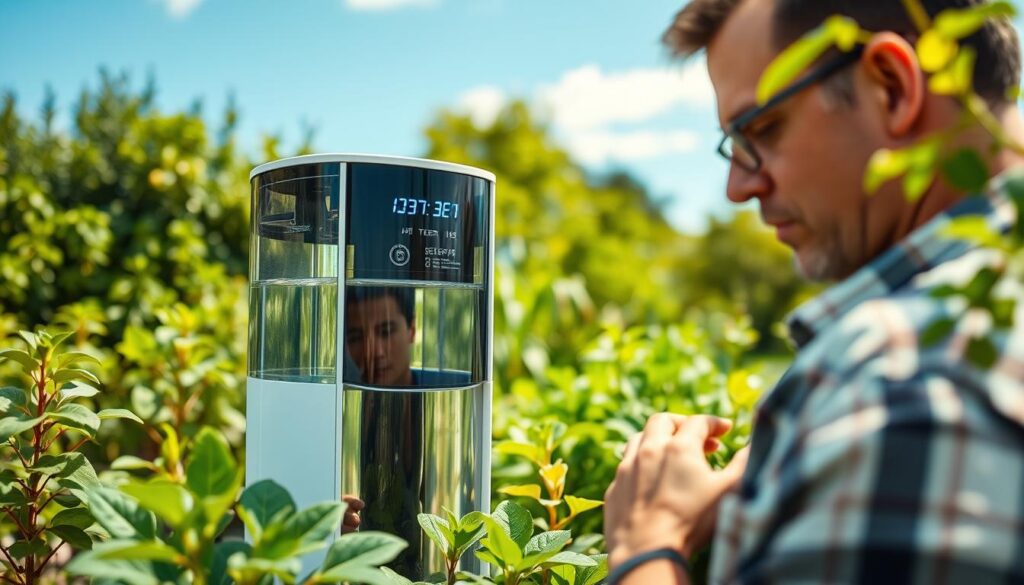
What to Put at the Bottom of Your Planter
The bottom of your planter plays a crucial role in drainage. Avoid using rocks or gravel, as they can trap water and cause issues. Instead, opt for a lightweight material like perlite or a mesh screen to keep the soil in place while allowing water to flow freely.
Here’s a quick comparison of materials:
| Material | Pros | Cons |
|---|---|---|
| Perlite | Lightweight, improves drainage | Can float to the top |
| Mesh Screen | Prevents soil loss, durable | May clog over time |
| Rocks/Gravel | Readily available | Traps water, adds weight |
Recognizing When Not to Use These Systems
While these setups are versatile, they aren’t ideal for all plants. Succulents and cacti, for example, prefer drier conditions and may suffer in a consistently moist environment. Additionally, if you live in a humid climate, you might need to adjust the water levels more frequently.
Monitor your plants closely. If you notice persistent issues despite adjustments, it might be time to switch to a traditional planter. Remember, the goal is to keep your plants healthy, not to force a system that doesn’t work for them.
Conclusion
Transforming your garden into a thriving oasis doesn’t have to be complicated. By using systems with a water reservoir, you can ensure your plants stay hydrated without daily effort. These setups promote healthy root growth and conserve resources, making them ideal for busy lifestyles.
Choosing the right plants and soil is crucial. Vegetables like tomatoes and herbs such as basil thrive in these environments. A mix of compost and potting soil ensures proper moisture retention and nutrient delivery.
To avoid issues like overwatering, always check the drainage hole and monitor water levels. Lightweight materials like perlite at the bottom of your pot can improve drainage and prevent root rot.
Experiment with DIY setups or commercial options to find what works best for your space. These systems have made my garden more manageable and productive. Try them out and share your success stories!

